|
  |
|
Page 2 |
Newsletter 122, Autumn 2018 © Hampshire Mills
Group |
Headley Mill Visit
Putty
Robin
Appel
Pictures by Keith and Ruth Andrews
, Forging to
|
|
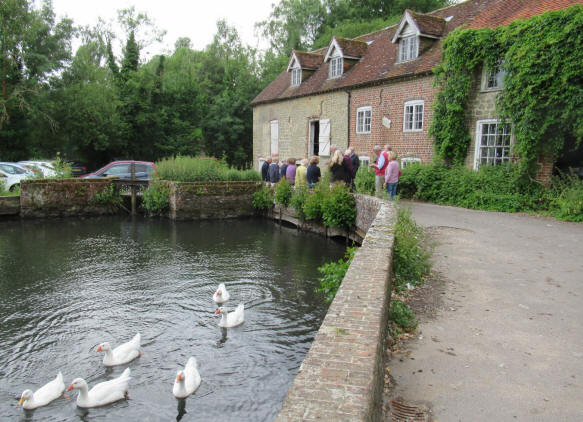
|
It was a near perfect summer’s evening when Richard
Ellis, HMG stalwart, welcomed 24 members to his
iconic mill sat astride the River Wey at Headley.
The mill pond appeared to be at capacity, and the
ducks were aplenty, but the mill looked a little
sad, deteriorating structures crying out for help.
They deserve it, there is more than 1000 years of
history here, and the mill and machinery is
complete.
At 6.30pm Richard was invited to begin his guided
tour, but he is obviously an old hand at this. “If
I start promptly, others will continue to arrive” he
declared, but he did, and, of course, they did!
Richard began by describing the continuous range of
mostly stone buildings which comprise the mill and
the mill house. |
|
He explained “mills made money, but they shook
themselves to bits” so millers were forever
rebuilding them, which is why Headley Mill combined
four separate structures. The first, the mill house,
with its Georgian front is 1796, confirmed by a coin
of that date found concealed in the front door
structure, a well-known signature employed by
builders over 2-300 years. Moving from right to
left, next is the facade which houses the wheel –
1831, and is made of bricks, which was probably a
way the then miller advertised his prosperity. Then
comes the main body of the mill, which is
mediaeval. Finally the most southerly structure, is
again stone, 16th-17th century.
|
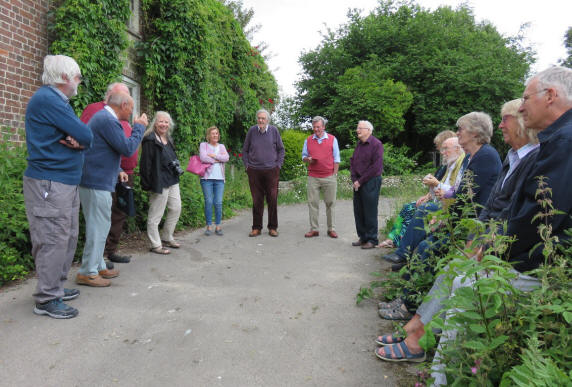 |
|
The history of the mill is not without controversy.
The River Wey, or more definitively, the middle of
the River Wey, once formed the boundary of land
owned by the Bishop of Winchester (to the north
east), and a hunting forest owned by King John (to
the south west). The bishop was comfortable with
the mill from which he drew taxes, the king was not.
The king saw the mill as an encroachment of his
sacred hunting grounds. The dispute went on for
many years, rendering the mill inoperable (the mill
pond being drained by the king), but was finally
resolved in 1272.
|
|
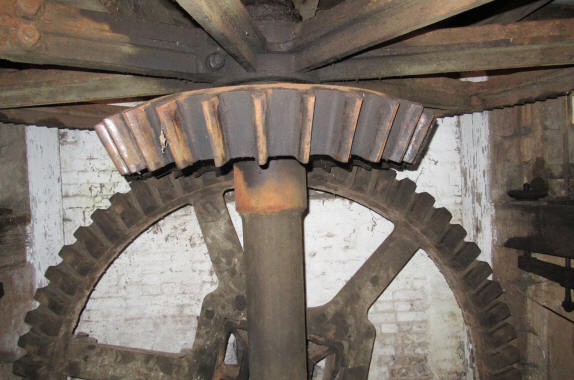
|
In 1831 all the wooden machinery within the mill was
replaced with iron, although, as was common
practice, all the gears retained wooden teeth (apple
wood) for quieter running, and the avoidance of
sparks. The wooden waterwheel, still outside, but
about to become ‘inside’, was not replaced until
much later in 1926, albeit, even then, the wooden
shaft was retained.
|
|
Coopers of Romsey fitted the new iron waterwheel,
which weighs in the order of 2 tons, and today
requires some urgent maintenance work. There are
three pairs of French Burr stones, and a pair of
Derby Peak stones, two pairs of which are capable of
continuous running at any one time. |
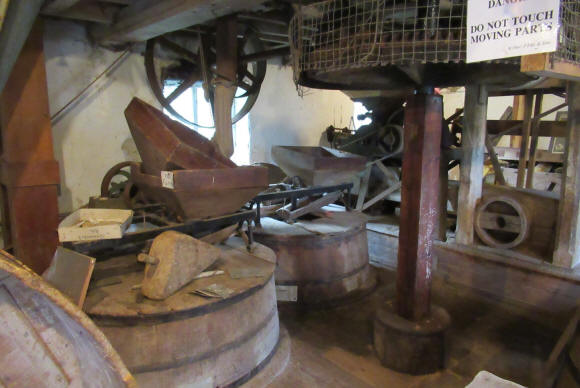
|
|
The Ellis family took over the mill in 1913, so it
was they who commissioned the new waterwheel. As a
corn merchant myself, of 55 years standing, I was
particularly intrigued to learn that the elevators
and conveyors within the mill, which replaced the
manual handling of heavy and cumbersome grain sacks,
were installed in the 1950s, well ahead of grain
sacks disappearing off farms in the late 1960s.
Clearly the Ellis family, to revisit Richard’s
earlier quote, were “making money” in those days to
have invested ahead of the need to.
|
|
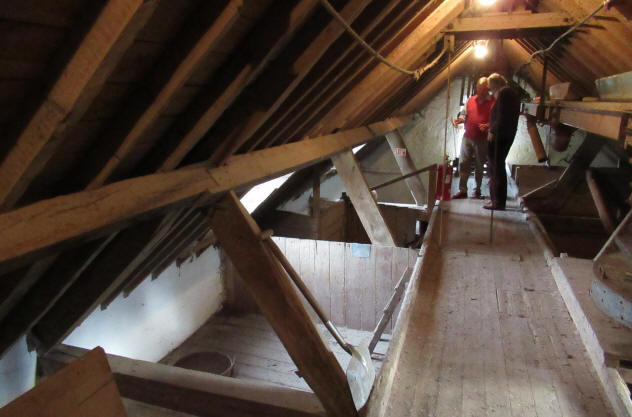
|
But when Richard was asked what volume grain could
be stored in the wooden grain bins at the top of the
mill (second floor), he replied that his father
always advised “never more than 50 tons”! But that
would have been a minimum of 500 sacks in the days
of the sack hoist, so perhaps the expenditure on
elevators and conveyors was a more prudent than
profligate spend after all. |
|
Today, all the equipment cluttering the floors of
the mill is a veritable ‘Aladdin’s cave’ of period
hardware which would all fit very nicely into my
maltings museum in Warminster. Sack trucks, weighing
machines, and an outstanding ‘miller’s desk’ all
caught my eye. Also a piece of remarkable modern
technology which Richard was justly proud of – “a
screw that bends” for lifting the millstones. |
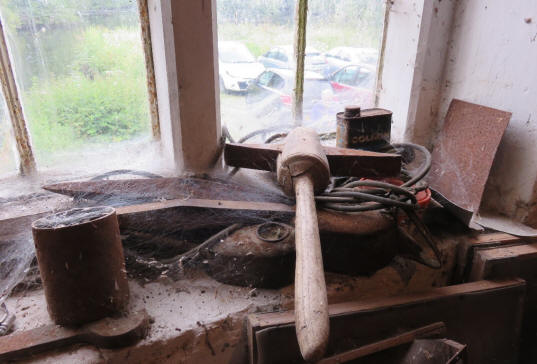
|
|
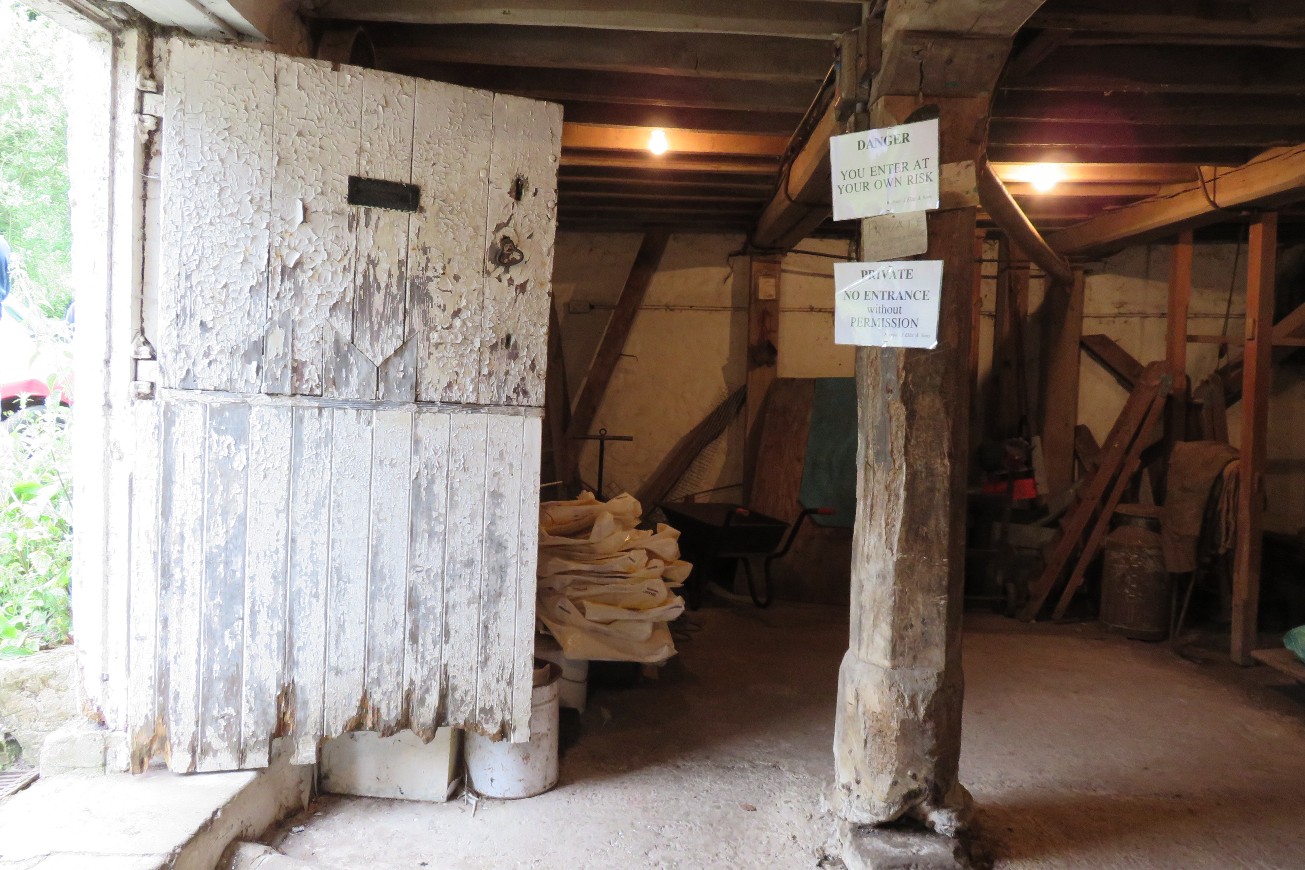
|
This was my first visit to Headley Mill, and it was
a truly fascinating experience, but Richard’s
prophecy of “one day a property developer will take
over” screams of a missed opportunity. There are a
lot of former watermills like Headley Mill that
offer that iconic image of the “old mill by the
stream” which, another day, could become a very
successful brand.
But Headley Mill, which could be made to grind corn
again, is different from most of them. If I am not
mistaken, it has land around it. That is the asset
which would make the difference and which could be
so important to any new venture allowing the scope
to develop. Let us hope the Ellis family can hang
on long enough for an opportunity like that to come
along.
|
|
|
